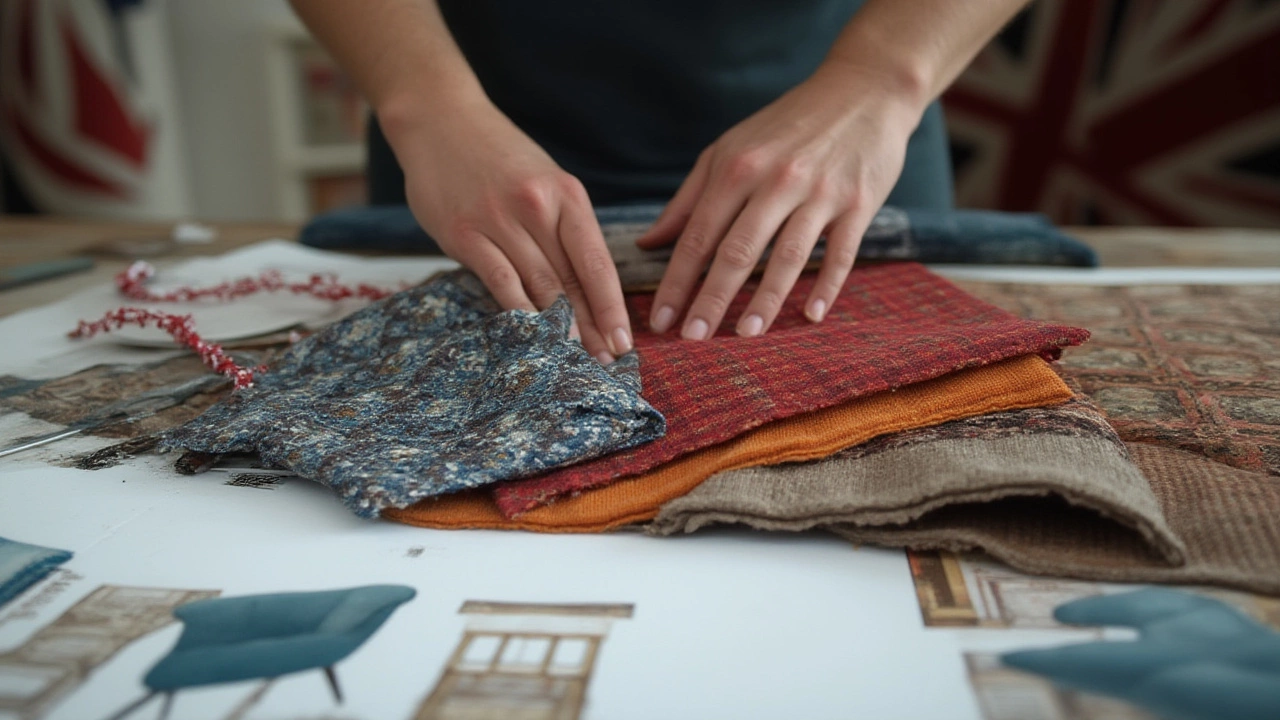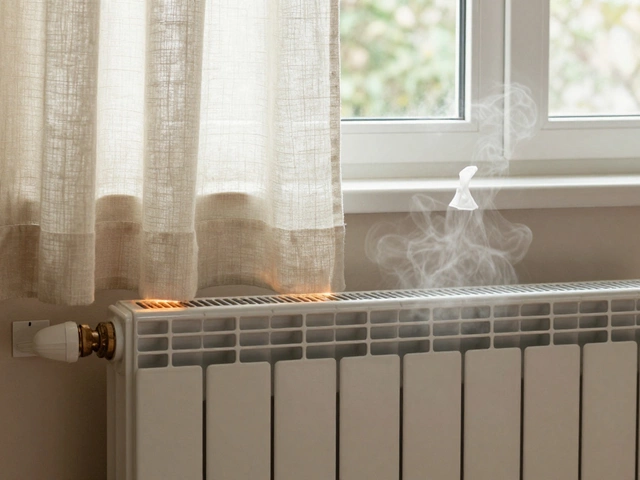Why Are Lazy Boy Recliners So Expensive? Unpacking the Price Tag

You’d think a chair designed for napping and binge-watching would be one of life’s cheaper thrills. Then you walk into a furniture store, glance at that chubby, inviting Lazy Boy, and nearly cough up your coffee at the price tag. It’s not just a chair—it’s an investment. So what exactly makes Lazy Boy recliners so outrageously expensive compared to most sofas and chairs? Here’s the low-down on why your dream seat comes with such a hefty price, and maybe even the hidden value that’s harder to see at first glance.
The Anatomy of a High-Priced Recliner
First off, let’s pull apart what you actually get when you sit in a Lazy Boy recliner. It’s never just a “chair.” Inside, there’s a tangle of engineering that most couches wouldn’t dream of messing with. Each one is built with a steel reclining mechanism designed to work smoothly under stress, sometimes with up to 18 moving parts. A regular armchair might have a simple wooden frame, but a Lazy Boy? That is a full-on metal-and-wood hybrid, often using kiln-dried hardwood for the bones of the piece. Why kiln-dried? It helps the wood resist warping and cracking so that reclining lever doesn’t snap off one evening during a high-stakes game night.
The padding is different, too. Instead of just stuffing in whatever foam is cheapest, most Lazy Boys use high-resilience polyurethane foam—a mouthful, but this means the cushion bounces back after you get up instead of flattening into a sad pancake. Some models even have memory foam or cooling gel layers for those marathon TV sessions. Then there’s the upholstery. Genuine leather? Expect the price to zoom up, since real leather isn’t just more expensive, it’s more durable and harder to stitch onto a chair with such complex curves and corners. Good fabric isn’t cheap either; these are performance materials won’t give out in a year after your dog claims it as his throne.
Add to that ergonomic touches—the lumbar support, adjustable headrests, and sometimes USB charging ports stashed in the arm. Every extra bell and whistle adds another chunk to the cost. And construction is mostly still done in North America. According to company press releases from 2024, about 80% of Lazy Boy recliners are made or at least assembled in the U.S., rather than rolling out of giant overseas factories. Labor here eats up a lot more of the budget. You can actually see the hand-applied detail in the stitching if you flip over a cushion.
Check this quick comparison of what goes into a standard Lazy Boy vs a typical budget recliner:
| Feature | Lazy Boy Recliner | Budget Recliner (Generic) |
|---|---|---|
| Frame Material | Kiln-dried hardwood + steel | Plywood or plastic |
| Reclining Mechanism | Steel, multi-part patented design | Basic metal or manual lever |
| Upholstery | Genuine leather or high-grade fabric | Bonded leather or polyester |
| Padding | High-resilience foam, memory foam | Standard foam, fiberfill |
| Assembly Location | USA/Canada | Asia |
| Warranty | Limited lifetime on mechanism | 1 year (typical) |
Pretty easy to spot where that extra cash is going, right? The materials and labor simply cost more—with extra spent on durability and comfort you can actually feel.

The Cost Behind the Name: Brand, Innovation, and Marketing
The Lazy Boy brand isn’t just a name they stamp on chairs—it’s a whole reputation they defend fiercely. The company dates all the way back to 1927, when it introduced the first reclining wood-slat porch chair. Now, keep in mind that patent, those decades of tweaks, and all the in-house engineering. Every year, they pour money into more research to make the motion smoother, the chair quieter, and the longevity longer. They even feature anti-tip technology on some modern models, so you stay safe no matter how excited you get during the playoffs or your kid’s graduation on TV.
Then there’s advertising. Ever noticed how furniture brands seem to flood your radio, YouTube, or TV streaming with those cozy family ads? Lazy Boy spends millions on national campaigns, convinced that a big, friendly recliner can make you imagine home. That money gets rolled into the price you pay, plain and simple.
But here’s where things get interesting—the warranty. Most Lazy Boys come with a lifetime warranty on their reclining mechanism, and most budget-friendly options won’t come close. That’s not a marketing trick; it’s a sign they expect those parts to last decades, not just a few years. If you ever do have an issue, their customer service doesn’t ghost you. It’s not magic, it’s math. A 2023 Consumer Reports survey showed Lazy Boy recliners had above-average longevity, with over 85% of owners reporting no major issues after five years.
And then there’s innovation. Lazy Boy has been faster than most to roll out features people didn’t even know they wanted—like built-in massage, power-lift for seniors, or app-connected smart controls (which, yes, can feel a little over-the-top). Every new idea means engineering costs and extra training in their factories. And don’t overlook style: Lazy Boy partnered with big designers like duo Priya & Carter in 2024 for limited runs—those collaborations come with their own astronomical price tags, just like in high fashion.
Brand reputation is a sneaky cost, too. Think about it: when you buy a Lazy Boy, you’re almost buying peace of mind. That’s hard to price, but brands spend decades, even centuries, creating that feeling. And once they have it, they definitely bake it into the sticker price.

Can You Save Money on a Lazy Boy? Smart Tips for Shoppers
All this probably sounds like bad news to your wallet, but there are real ways to pay less for a genuine Lazy Boy—without settling for an inferior knockoff. First, shop during slow seasons. Retail experts say late January to early March and again in mid-summer (think July) are great times for furniture sales. Stores drop prices to move inventory ahead of new collections arriving in the fall and spring.
Don’t just stick to flashy malls. Authorized dealers sometimes list last year’s models on clearance or in the “scratch and dent” section. Some barely have a flaw at all—like a barely visible nick or the wrong fabric color. I scored my own big chair with a little scuff on the back, shoved against a wall where nobody sees. Instant savings, no sacrifice.
If you’re flexible on color or extras, use that to your advantage. Custom orders with every bell and whistle cost more—not just from the company, but in shipping and delay fees. Stick to in-stock models for a better deal.
There’s also the certified pre-owned route. Lazy Boy’s own website, as of last year, started quietly experimenting with a buyback and refurbish program in some cities. These chairs are deep-cleaned, mechanically inspected, and resold with short-term warranties. They’re like the certified used cars of the recliner world—still high-quality but with more reasonable prices. Look for listings in your area if you’re serious about saving.
And don’t be afraid to negotiate, especially at local retailers! Unlike big-box stores, family furniture shops sometimes have wiggle room—especially on floor models or when you’re buying more than one piece for a room redo.
Finally, think about what you actually need. Some families swear by every attachment and power feature, but many don’t use them at all. Strip the options down to the size and fabric that fit your space and style, and you’ll often see the price fall. If you need help picking what’s worth it and what’s hype, here’s a quick tip-list:
- Skip the power lift if everyone in your house can stand up easily.
- Stick with classic colors and durable fabrics—“special” patterns or limited editions add cost fast.
- Ask what’s actually in stock—custom orders can add hundreds to the price.
- Test the recliner’s mechanism in-store. Sometimes the mid-price options feel almost identical to the pricey pick.
- Check if extended warranties are really needed. Lazy Boy’s core warranty usually covers you well enough, unless you have a pet with a taste for furniture legs.
The truth? A Lazy Boy recliner is expensive for plenty of good reasons, from its strong engineering to its reputation and warranty. But, if you know how to hunt for bargains, don’t get hypnotized by the shiny extras, and time your buy right, there’s room for comfort in both your living room and your budget.





